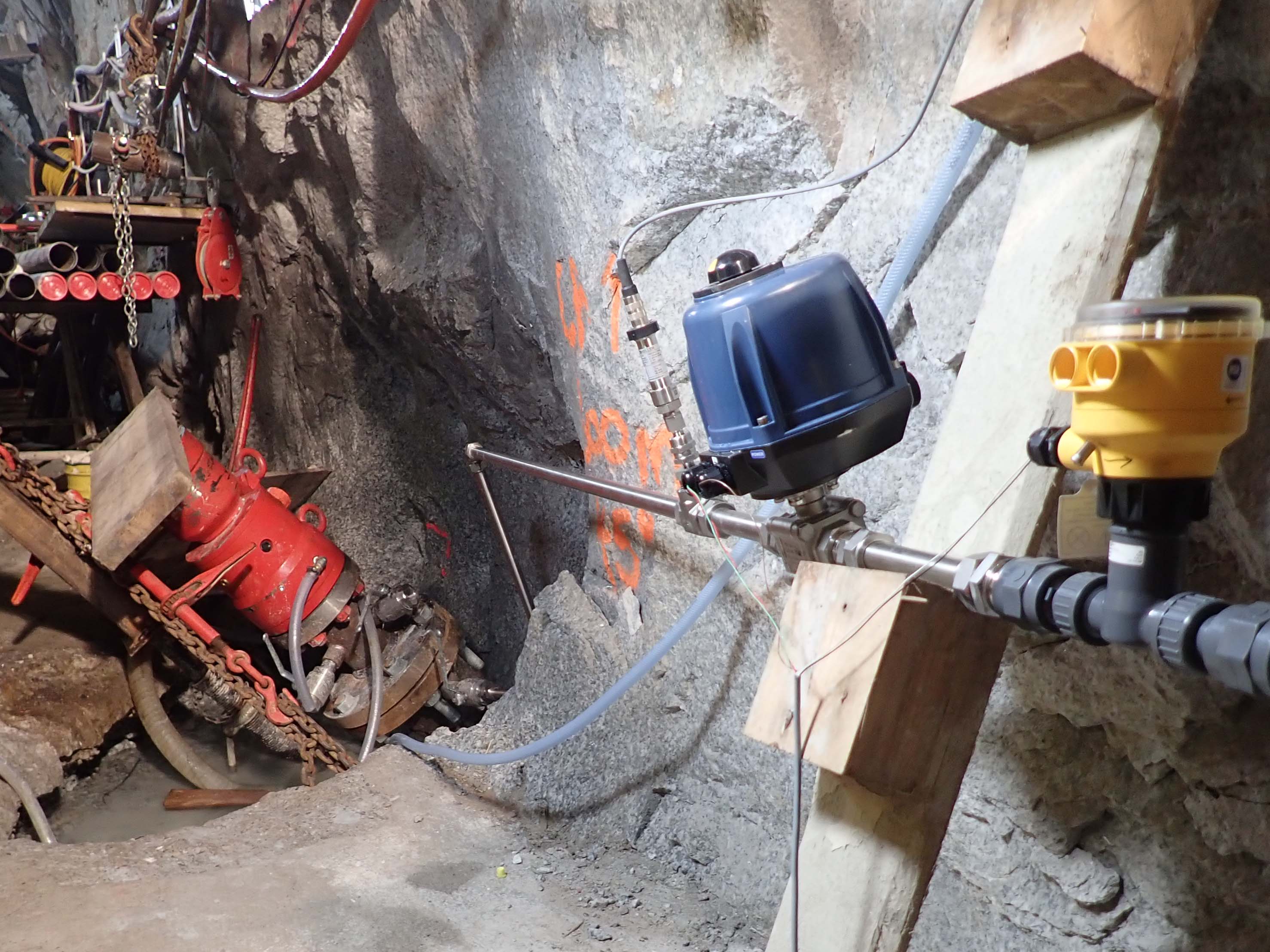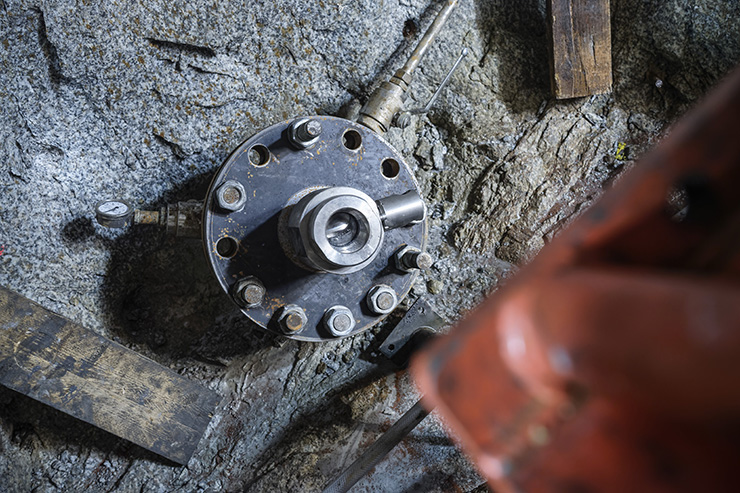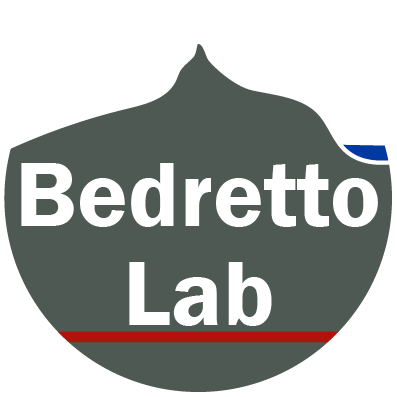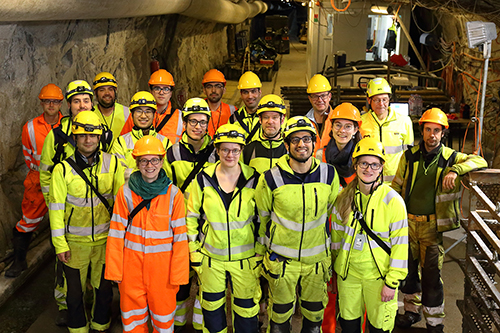First large scale research laboratory for geoenergies in Switzerland: the Bedretto Underground Laboratory for Geosciences & Geoenergy
The Swiss Energy Strategy 2050 prioritizes renewable energies, with geothermal energy being among others a very promising resource for electricity and heat production. To this end, ETH Zurich established the "Bedretto Underground Laboratory for Geosciences & Geoenergy" with the support from the Swiss Competence Center for Energy Research (SCCER-SoE) and other partners. The Bedretto Lab is a unique research infrastructure aimed at developing and establishing workflows for a safe, efficient, and sustainable use of geothermal heat. It is located 1500 metres below ground and allows experiments on a larger scale: from formerly tens to now a few hundreds of metres. The Bedretto Reservoir Project is a follow-up of the successful Grimsel In-situ Stimulation and Circulation (ISC) project. It currently is the largest project at the Bedretto Lab.
The Bedretto Lab is located 1500 metres below surface in the middle of a 5.2 kilometre long tunnel connecting the Ticino with the Furka tunnel. This previously abandoned tunnel owned by the railway company Matterhorn Gotthard Bahn proved to be a suitable location for such a research laboratory due to its geology and accessibility. The Department of Earth Sciences of ETH Zurich established the Bedretto Lab with the support of the Swiss Competence Center for Energy Research (SCCER-SoE).
Research in the Bedretto Lab aims at showing that it is possible to plan, construct, and control a sustainable heat exchanger with hydraulic stimulation processes over several decades. Geothermal energy is among other renewables a promising resource for electricity and heat production. It uses the enormous heat captured in the deep underground. For this purpose, cold water is injected at high pressure into the rock, where it heats up before it is pumped back to the surface. In Switzerland, the temperature rises by approximately 30 °C for every kilometre below the surface towards the centre of the Earth. To benefit from this energy resource, rock structures at temperatures of at least 180 to 200 °C at depths of 4 to 5 kilometres have to be accessed.
Excellent conditions at a unique location
Thanks to its location, the Bedretto Lab offers an important advancement for testing earlier concepts in a setting that reflects the conditions in the deep underground as close as possible. The overburden of 1000 to 1500 meters above the lab simulates well the pressure conditions at relevant depths for a geothermal reservoir. Just as importantly, the Bedretto Lab allows validating the results from previous experiments conducted in other laboratories – such as Grimsel – to a larger scale. A bigger stimulation scale implicates longer boreholes, which allow the scientists to conduct experiments that are more realistic and to apply different stimulation concepts.
The Bedretto Reservoir Project and its research questions
Similar to the Grimsel ISC project, the Bedretto Reservoir project will perform in-situ stimulation tests while monitoring the hydro-seismo-mechanical parameters at a high spatial resolution. Based on lessons learned and findings from previous experiments, for example at Grimsel, the scientists will address the following issues:
- Appropriate stimulation concepts for permeability enhancement by orders of magnitudes while minimizing induced seismicity
- Relationships between the hydro-mechanical response, the stimulation concept, permeability creation, effective porosity and induced seismicity
- Transition zone evolution with respect to the injection volume over time
- Heat exchanger properties of the reservoir
- Identification of the source processes of seismic events and their relation to the reservoir stimulation.
The Bedretto Reservoir Project encompasses three sub-projects with complementary targets aiming at providing evidence for the development of large-scale deep reservoirs for the circulation of water and the storage and extraction of geothermal energy:
- VALTER (Validation of Technologies for Reservoir Engineering), funded by the Swiss Federal Office of Energy (SFOE) (lead ETHZ / SCCER-SoE)
- DESTRESS (Demonstration of soft stimulation treatments of geothermal reservoirs), a Horizon 2020 project funded by the EU (lead Geo-Energie Suisse)
- ZoDrEx (Zonal Isolation, Drilling and Exploitation of EGS Projects), funded by EU initiative Geothermica – Era Net (lead Geo-Energie Suisse)
VALTER and DESTRESS deal with the demonstration and optimization of large rock volume stimulation treatments related to fluid circulation in significant quantities while minimising environmental impacts such as seismic events or pollution of groundwater reservoirs. ZoDrEx focuses on the performance of zonal isolation technologies and their potential importance during stimulations as well as on the fluid driven percussion drilling method in highly deviated trajectory boreholes to enhance drilling efficiency in crystalline rock. For this purpose, sophisticated monitoring is prepared, including monitoring of induced seismicity on the pico and micro scale, strain monitoring as well as pressure, tilt and geochemical monitoring.
Timeline and funding
ETH Zurich inaugurated the Bedretto Lab in May 2019. First research characterisation experiments started in spring 2019, while multi-stage stimulation experiments are planned for 2020.
Funding comes from the SNSF, the Swiss Federal Office of Energy SFOE, the European Union, and industry partners.




